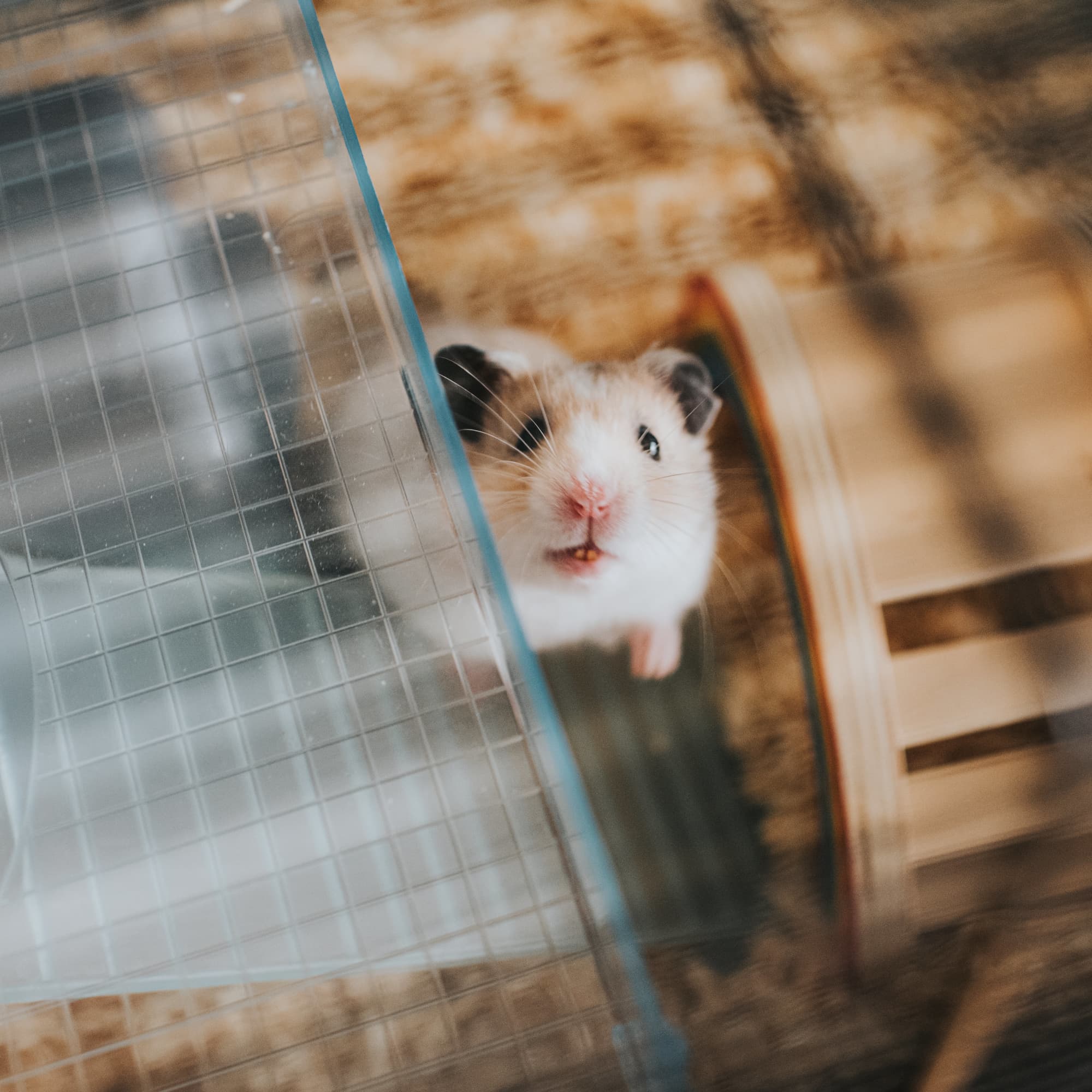
- POPSUGAR Australia
- Living
- If Your Hamster Keeps Escaping the Cage, Here’s What You Need to Do
If Your Hamster Keeps Escaping the Cage, Here’s What You Need to Do

Keeping your pet hamster in its cage can be a challenge. They seem to have a magical way of escaping, no matter how secure you think their enclosure is. And then ensues the heart-stopping moments where you try to coax them out of whatever cozy space they’ve decided to hide in. A hamster is safest inside their cages, so it’s best to find a setup that keeps your furry friend safely locked in – these vet-approved tips will help you set up the best hamster cage.
Why Do Hamsters Escape Their Cages?
Hamsters can be like mini-Houdinis, always finding new ways to escape their cages. This is in part due to their biological drive to dig long underground tunnels, Maureen Murithi, DVM, told POPSUGAR.
Dr. Murithi also noted that if a hamster’s cage is not stimulating enough, boredom can also play a role in their creative attempts to break free. Therefore, providing an engaging environment is just as important as making sure the cage is escape-proof.
What Kind of Cages Works Best?
Dr. Murithi suggested using an aquarium tank with a mesh lid for your hamster, as opposed to wired or meshed cages. “The bars of the cage should be evenly spaced and not too far spaced. A distance of 1.3 centimetres is best. This will prevent the hamster from being able to tunnel its way out,” she said.
Avoid cages made from plastic or thin wood. “Hamsters are rodents and can gnaw through thin flexible material,” Dr. Murithi explained. If you do use a wire cage, Dr. Murithi said that it is essential to replace the bars or the entire cage immediately if they become loose or damaged.
How Can I Further Escape-Proof the Cage?
When it comes to escape-proofing your cage, more reinforcement is always better than less. If you opt for a tank with a mesh lid, Dr. Murithi recommended placing weights on the four corners of the mesh lid to prevent the hamster from toppling it over. She also suggested placing a metal clip at the door of the cage for better security and to prevent any escape attempts.
Rachel Reisner, a certified professional pet sitter in Montreal, Canada, suggested putting locks on the cover. “There are screen locks available for wire covers, which will prevent your hamster from lifting the wire lid on their glass tank,” she said.
What Makes a Stimulating Environment for a Hamster?
Natural instincts drive your hamster’s escape attempts, so it’s essential to find alternative ways to meet those biological needs. One way to do this is to make the cage an engaging place for your pet to be. This distracts them from seeking adventure outside the cage. Reisner said it’s important to get the largest cage you can. “A hamster requires a lot more space than most people give them,” she explained. “It’s estimated that hamsters can run around five miles each night. They need space to explore and move around in.” In terms of size, look for something approximately .05 cubic meters, according to Dr. Murithi. She also noted that hamsters prefer narrow, long cages as opposed to vertical leveled cages.
You’ll also want to fill the cage with stimulating toys. Dr. Murithi suggested putting a hamster wheel of at least 20 centimeters diameter inside the cage, a well as chew toys and walnut shells or other toys made of untreated wood. Also, look for tunnels that you can add to the cage. “Hamsters take comfort in tunneling through narrow spaces,” Dr. Murithi explained. She suggested tunnels made from thick sturdy plastic or empty toilet paper rolls.
Lastly, Dr. Murithi emphasized the importance of playing with your hamster outside of the cage at least once a day. “It quenches their curiosity for the outdoors.” Which means you’re less likely to have to hunt down your little friend from every corner of your apartment.


